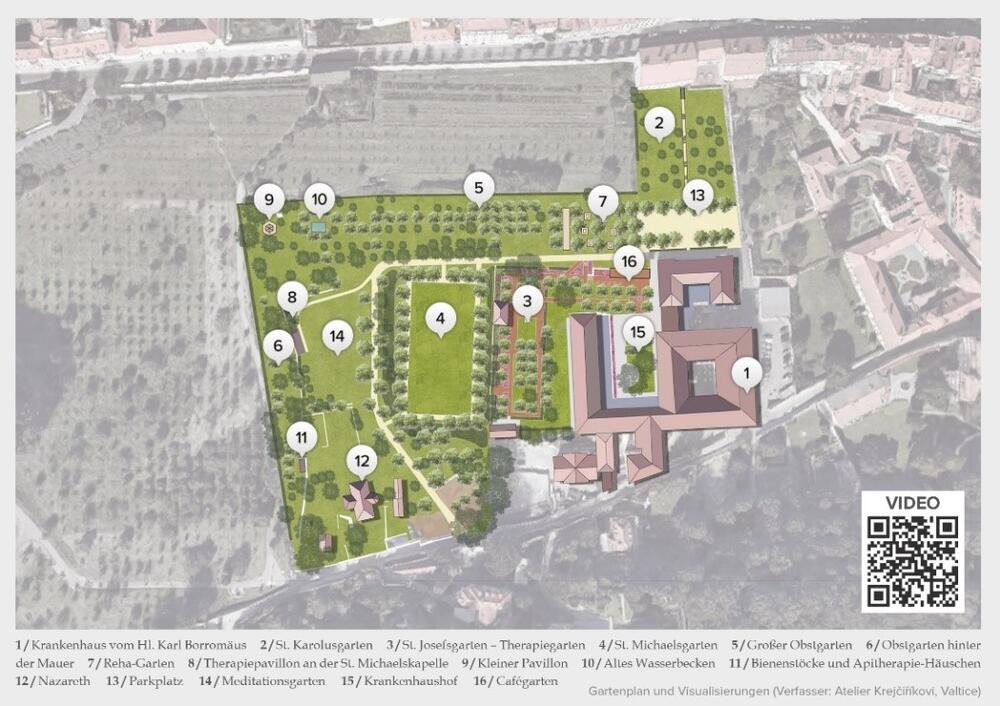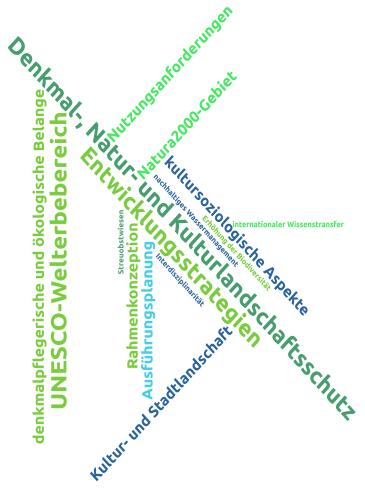Model conception for the monumental and ecological valorization of the Hospital and Monastery Garden of the Borromean Sisters in Prague at the intersection of UNESCO World Heritage and Natura 2000
International project funding
Subject and goals of the project
The aim of the project was to develop an exemplary documentation and framework concept for the monumental and ecological valorization of the Hospital Garden of the Sisters of Mercy of St. Charles Borromeo in Prague, taking into account aspects of cultural sociology. The hospital garden has a special potential, the research, development and planning of which was the subject of the project. The hitherto unknown history of the monastery complex was traced in relation to its open space development. Furthermore, innovative measures for the solution of conflicts at the intersection of monument, nature and cultural landscape protection in an urban context were developed as a model. The project had three phases:
Phase 1: Basic investigation with the evaluation of archival sources and historical illustrations, plans and maps
The inventory of the Hospital Garden was recorded in plans, text and photographs, showing the special features relevant to the monument. In addition, a basic ecological survey of the faunistic and floristic inventory as well as investigations to determine the soil quality were carried out.
Phase 2: Ecological and monument preservation framework conception
The natural space surrounding the Hospitalgarten and the cultural and urban landscape were analyzed. The inventories developed in Phase 1 were overlaid with the researched historical plans and maps, with a designation of the preserved time layers and an evaluation of the species inventory. Further, ecological and historic preservation guiding principles were established, and preservation and development strategies and goals were defined.
Phase 3: Planning
Based on the results of phases 1 and 2, a design and approval planning as well as an implementation planning were developed. All planning was carried out in close coordination with the responsible authorities, such as the National Office for the Protection of Monuments, the environmental authorities or the Water Management Office.
At the end of the project, the building permit was also obtained and the implementation of concrete measures was started.
Also part of the project was the interdisciplinary and international knowledge transfer in the form of smaller targeted workshops as well as a technical excursion to Germany.
Public relations also played an important role. The project and its results were presented in a calendar, a leaflet and a planning booklet.
Innovation and exemplary nature of the project
As in the case of many similar facilities in the Czech Republic, but also in Germany, an overall concept is still lacking that reconciles monument preservation and ecological concerns while taking into account current usage requirements, i.e. medical, therapeutic and spiritual aspects, as well as conceptual-strategic considerations for integration into the surroundings (UNESCO World Heritage area and Natura 2000 site).
The project addressed a desideratum in dealing with historically valuable garden sites. According to the state of the art, often only a mono-disciplinary consideration of the existing situation takes place, e.g. only with regard to flora and fauna or only with regard to the concerns of monument preservation. Especially with regard to the Sustainable Development Goals, an inter- and transdisciplinary examination of the existing stock as well as their development potentials is necessary. Only in this way can the garden be preserved in the future both as a monument and fulfill its task as a place of biodiversity.
The Hospital Garden of the Borromean Sisters is an important cultural asset of Czech and German history from a time when the German population in Prague was almost twice as high as the native population. Situated on the edge of a Natura 2000 site and in the middle of the UNESCO World Heritage zone of the historic city center of Prague, the garden offers excellent conditions for a model project on how to successfully valorize green and park areas close to the city center in a way that is compatible with the preservation of historic monuments and ecologically sound. The project thus serves as a model for many similar hospital gardens in the Czech Republic, but also in Germany and beyond.
Special aspects of the project
The project addressed two specific concerns of the Sustainable Development Goals. Firstly, the exemplary increase in biodiversity at the Hospitalgarten site and the functional integration of the garden area into the green corridor of the Laurenziberg (Petřín). Secondly, the introduction of sustainable water management at Laurenziberg. This is to be achieved, among other things, by improving the soil, the species-rich replanting of woody plants and the creation of orchards and shrub hedges, etc. Other special aspects of the project included the participatory structure with an open dialog during project implementation, as well as the local knowledge of the applicant and all involved stakeholders.
Funding subject: Preservation and safeguarding of nationally valuable cultural assets from harmful environmental influences
Cooperation partners:
- Dresden University of Technology, Department of History of Landscape Architecture/Garden Monument Preservation, Dresden
- Congregation of the Sisters of Charity of St. Charles Borromeo
Locations: Germany (focus: Dresden/Saxony), Czech Republic (focus: Prague)
Funding period: February 2018 to April 2021
Project costs: Total volume: 159 596 Euro, DBU funding: 124 953 Euro
DBU-AZ: 34526
Note: Translation of the German version with DeepL
Last updated: 16.11.2021



